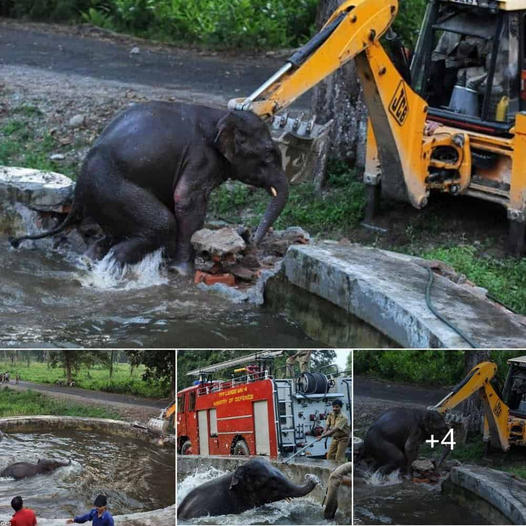In a remarkable display of natural selection, certain elephant populations across Africa are rapidly evolving to lose their iconic tusks as a defense mechanism against the devastating impacts of poaching.

Historically, the impressive ivory tusks sported by both male and female elephants have been a prime target for illegal poachers, who relentlessly hunt these majestic creatures in order to harvest and sell the valuable ivory on the black market. This cruel practice has decimated elephant populations, driving many species toward the brink of extinction.
However, in a remarkable twist of evolutionary fate, some elephant herds have begun to adapt to this ongoing threat by producing more and more tuskless individuals – a genetic variation that effectively removes the primary motivation for poachers to target these animals.

Scientists have observed this remarkable phenomenon unfolding in real-time, with tuskless elephants becoming increasingly prevalent in certain regions. In Mozambique’s Gorongosa National Park, for instance, the proportion of tuskless female elephants has skyrocketed from just 18.5% prior to the country’s devastating civil war to a staggering 51.5% today.
Researchers attribute this rapid evolutionary shift to the intense poaching pressures that ravaged Gorongosa’s elephant population during the conflict. With the most valuable, tusk-bearing individuals ruthlessly targeted and eliminated, the tuskless elephants were able to survive and thrive, passing on their genetic advantage to subsequent generations.

“This is an example of how rapidly evolution can occur when the pressure is intense,” explains Dr. Ryan Long, a biologist at the University of Idaho who has studied this phenomenon. “Poaching has essentially acted as a high-grade filter, selecting for the trait of not having tusks.”
While the loss of these magnificent ivory appendages may seem like a tragic consequence, wildlife experts emphasize that it represents a remarkable and inspiring example of how species can adapt and overcome even the most devastating human-caused threats. By shedding their tusks, these elephants are essentially trading their most prized physical attribute for the chance to survive and perpetuate their species.
“It’s a sobering reminder of the immense pressures that wildlife face in the modern world,” says Dr. Long. “But it’s also a testament to the incredible resilience and adaptive capacity of these animals. If elephants can evolve to thwart poachers, there’s hope that other threatened species can find a way to adapt and endure.”
As the global conservation community continues to grapple with the poaching crisis, this evolutionary phenomenon offers a glimmer of hope – a sign that even in the face of intense, human-driven threats, nature can find a way to fight back and ensure the survival of its most magnificent inhabitants.




